#sql developer
Explore tagged Tumblr posts
Text
THINKWISE DEVELOPERS for #Europe, REMOTE WORK
THINKWISE DEVELOPERS for #EuropeREMOTE WORKContract : 6 MonthWages : 50 EURO Per HrSkill : #DotNet #SQL #thinkwisedevelopers DotNet #dotnetdeveloper #dotnetdevelopment #DotNetDevelopersinEurope europe #europejobs #jobsineurope #itjobsineurope #european #indianineurope #europerecruitment #itrecruitment #itstaffing openfornewopportunities #jobopenings #hirirng #hiringalert #hiringimmediately…

View On WordPress
#Dontnet Developer#Dotnet Development#EuropeITjobs#Europejobs#InternaciaRekruto#Internationalrecruiters#Internationalrecruiterschennai#internationalrecruitersindia#JobsinEurope#Remotejobs#Sql developer#Thinkwise Developer#Workfromhome
0 notes
Text
SQL Fundamentals #1: SQL Data Definition
Last year in college , I had the opportunity to dive deep into SQL. The course was made even more exciting by an amazing instructor . Fast forward to today, and I regularly use SQL in my backend development work with PHP. Today, I felt the need to refresh my SQL knowledge a bit, and that's why I've put together three posts aimed at helping beginners grasp the fundamentals of SQL.
Understanding Relational Databases
Let's Begin with the Basics: What Is a Database?
Simply put, a database is like a digital warehouse where you store large amounts of data. When you work on projects that involve data, you need a place to keep that data organized and accessible, and that's where databases come into play.
Exploring Different Types of Databases
When it comes to databases, there are two primary types to consider: relational and non-relational.
Relational Databases: Structured Like Tables
Think of a relational database as a collection of neatly organized tables, somewhat like rows and columns in an Excel spreadsheet. Each table represents a specific type of information, and these tables are interconnected through shared attributes. It's similar to a well-organized library catalog where you can find books by author, title, or genre.
Key Points:
Tables with rows and columns.
Data is neatly structured, much like a library catalog.
You use a structured query language (SQL) to interact with it.
Ideal for handling structured data with complex relationships.
Non-Relational Databases: Flexibility in Containers
Now, imagine a non-relational database as a collection of flexible containers, more like bins or boxes. Each container holds data, but they don't have to adhere to a fixed format. It's like managing a diverse collection of items in various boxes without strict rules. This flexibility is incredibly useful when dealing with unstructured or rapidly changing data, like social media posts or sensor readings.
Key Points:
Data can be stored in diverse formats.
There's no rigid structure; adaptability is the name of the game.
Non-relational databases (often called NoSQL databases) are commonly used.
Ideal for handling unstructured or dynamic data.
Now, Let's Dive into SQL:

SQL is a :
Data Definition language ( what todays post is all about )
Data Manipulation language
Data Query language
Task: Building and Interacting with a Bookstore Database
Setting Up the Database
Our first step in creating a bookstore database is to establish it. You can achieve this with a straightforward SQL command:
CREATE DATABASE bookstoreDB;
SQL Data Definition
As the name suggests, this step is all about defining your tables. By the end of this phase, your database and the tables within it are created and ready for action.

1 - Introducing the 'Books' Table
A bookstore is all about its collection of books, so our 'bookstoreDB' needs a place to store them. We'll call this place the 'books' table. Here's how you create it:
CREATE TABLE books ( -- Don't worry, we'll fill this in soon! );
Now, each book has its own set of unique details, including titles, authors, genres, publication years, and prices. These details will become the columns in our 'books' table, ensuring that every book can be fully described.
Now that we have the plan, let's create our 'books' table with all these attributes:
CREATE TABLE books ( title VARCHAR(40), author VARCHAR(40), genre VARCHAR(40), publishedYear DATE, price INT(10) );
With this structure in place, our bookstore database is ready to house a world of books.
2 - Making Changes to the Table
Sometimes, you might need to modify a table you've created in your database. Whether it's correcting an error during table creation, renaming the table, or adding/removing columns, these changes are made using the 'ALTER TABLE' command.
For instance, if you want to rename your 'books' table:
ALTER TABLE books RENAME TO books_table;
If you want to add a new column:
ALTER TABLE books ADD COLUMN description VARCHAR(100);
Or, if you need to delete a column:
ALTER TABLE books DROP COLUMN title;
3 - Dropping the Table
Finally, if you ever want to remove a table you've created in your database, you can do so using the 'DROP TABLE' command:
DROP TABLE books;
To keep this post concise, our next post will delve into the second step, which involves data manipulation. Once our bookstore database is up and running with its tables, we'll explore how to modify and enrich it with new information and data. Stay tuned ...
Part2
#code#codeblr#java development company#python#studyblr#progblr#programming#comp sci#web design#web developers#web development#website design#webdev#website#tech#learn to code#sql#sqlserver#sql course#data#datascience#backend
112 notes
·
View notes
Text
Programmers, Web designers, game developers, anyone else who does stuff with numbers on a computer screen.....curious to know if you guys ever dream in code, and if so, do you like it? I for one do not find it to be particularly enjoyable but want to hear what others have to say lol.
#php will be the death of me#web design#programming#coding#game developers#code#computer programming#computers#computer science#html#css#html css#javascript#visualbasic#c#c++#python#software engineering#sql
40 notes
·
View notes
Text
2 notes
·
View notes
Text
WBC Software Lab: Powering Digital Innovation with Saap Business,(.NET), SQL Database, Tally ERP9, and Web Development
In today’s fast-paced digital world, We provide 25 years of software solution businesses need robust, scalable, and innovative solutions to stay ahead. That’s where WBC Software Lab comes in.
We specialize in .NET, SQL database, web development, and SAAP (Software as a Service and Application Platform) business solutions, Tally ERP9 providing cutting-edge technology that helps companies thrive in an increasingly competitive market.
2 notes
·
View notes
Text
SQL Chart !
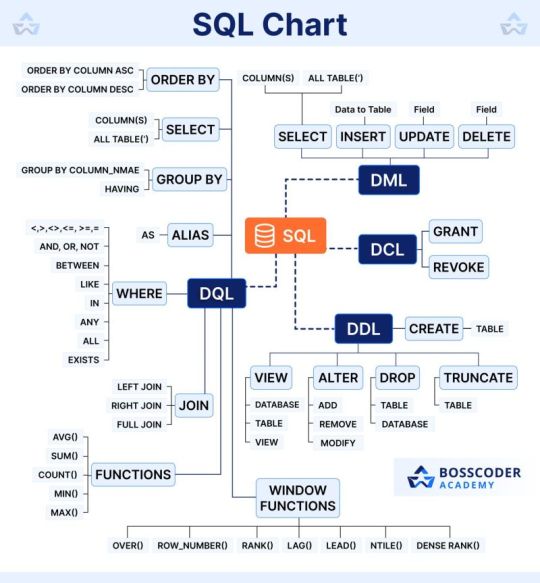
#software development#web development#100daysofcode#developerlife#web developers#developers#devs#worldcode#developers & startups#backenddevelopment#sql#programadores
5 notes
·
View notes
Text
That time I restored a Database view
Recently at work we've been migrating an old database system to a new platform to save money - this kind of shit is what makes your business processes faster, cheaper and more correct - and this has entailed sifting through a lot of tables, views, and views made of tables and views!
As it happens the finance guy who does all the payroll and expenses is a great guy to work with and basically the one person who knows all the relevant business rules, but also basically treats databases like they're excel workbooks. As such you have a bunch of bits stitched to each other and we're just figuring out how to first move everything and then ease into a well-oiled relational model with no duplication and all together on a single database.
While we in the dev team were figuring out how to do this for finance we were recently testing out a modified version of a view built on top of the old version and accidentally deleted the old version and not the modified testing version.
Mistakes are bound to happen, but we needed to figure out how to either restore it or at least figure out how to work without it because finance people love their data views and reports. There are probably clever things you can do with any DBMS to find shit you just dropped and restore it from backup, but I then realised that I'd been tasked with generating all the scripts for the database objects. There had to be a script laying around!
Sure enough I went to dig up the build script for the dropped view, and I ran it.
I queried it, and everything was back in place.
Shit goes wrong sometimes, but having the right failsafes can really make a difference.
Script your shit, use backups, use version control!
3 notes
·
View notes
Text
so it turns out they weren't kidding when they said breaking a monolith into microservices is hard.
#programming#enterprise software#enterprise application development#microservices#it also doesn't help that some folks need to BANNED from writing SQL queries
3 notes
·
View notes
Text
Making a compiler
Every programmer out there, new or experienced longs for a chance to create their own programming language and compiler. I am no exception. Months ago I decided to fork an old project on github and develop it in my image. The project was a golang-like unfinished compiler, so I dug in and made changes. I changed the language to resemble a subset of rust, go and ocaml. I plan to add a LLVM backend inspired by the tre golang compiler. I will continue working on it until it kinda works. I still have a lot to do. check out the project on the link below. If you want to contribute submit a pull request.
#golang#programming#rustlang#compiler#programming languages#c++#typescript#java#javascript#javaris x#java development company#javatpoint#software#developer#sql#open source#python
11 notes
·
View notes
Text
My 365 Days Streak at MIMO ...

"At Mimo, we believe that coding can open doors to opportunities like few other skills. That's why we've rallied around the purpose of making coding accessible to as many people as possible." MIMO

Today I completed my 365 day streak at Mimo. Phew, that was a long way through the programming and scripting languages “Python”, “SQL”, “HTML”, “CSS” and “JavaScript”.
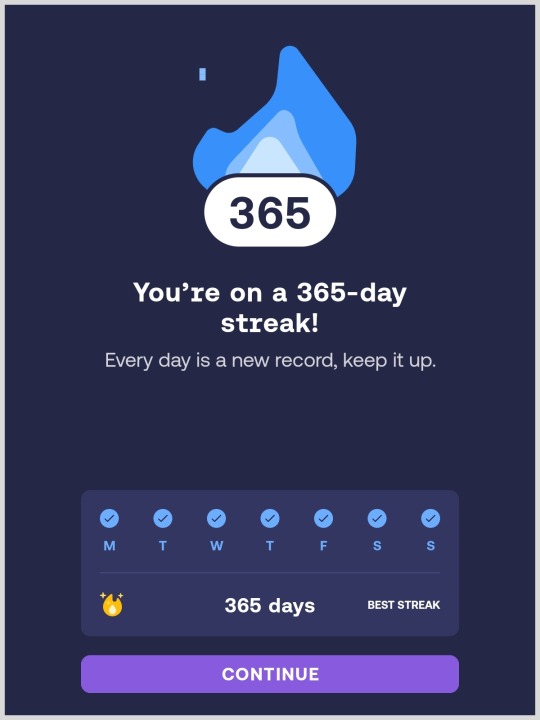
Even though there were sometimes tough times and I often repeated certain course sections, e.g. with "JavaScript", and the progress wasn't immediately apparent, I still enjoyed learning with MIMO again and again.

The support is also good, if you have questions or just get stuck. I can recommend MIMO to anyone who wants to immerse themselves in the world of programming languages online or with the app.
Post #209: Whoopee! My 365 Day streak on Mimo happens today on March 3, 2024.
#coding#programming#coding for kids#programmieren#education#javascript#css#sql#mimo#programming languages#html#teaching#learning#development#developer#developer community
6 notes
·
View notes
Text
SQL Fundamentals #2: SQL Data Manipulation
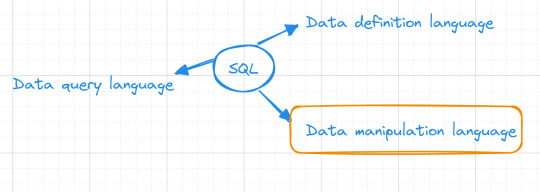
In our previous database exploration journey, SQL Fundamentals #1: SQL Data Definition, we set the stage by introducing the "books" table nestled within our bookstore database. Currently, our table is empty, Looking like :
books
| title | author | genre | publishedYear | price |
Data manipulation
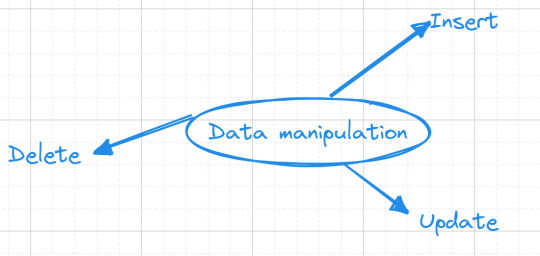
Now, let's embark on database interaction—data manipulation. This is where the magic happens, where our "books" table comes to life, and we finish our mission of data storage.
Inserting Data
Our initial task revolves around adding a collection of books into our "books" table. we want to add the book "The Great Gatsby" to our collection, authored F. Scott Fitzgerald. Here's how we express this in SQL:
INSERT INTO books(title, author, genre, publishedYear, price) VALUES('The Great Gatsby', 'F. Scott Fitzgerald', 'Classic', 1925, 10.99);
Alternatively, you can use a shorter form for inserting values, but be cautious as it relies on the order of columns in your table:
INSERT INTO books VALUES('The Great Gatsby', 'F. Scott Fitzgerald', 'Classic', 1925, 10.99);
Updating data
As time goes on, you might find the need to modify existing data in our "books" table. To accomplish this, we use the UPDATE command.For example :
UPDATE books SET price = 12.99 WHERE title = 'The Great Gatsby';
This SQL statement will locate the row with the title "The Great Gatsby" and modify its price to $12.99.
We'll discuss the where clause in (SQL fundamentals #3)
Deleting data
Sometimes, data becomes obsolete or irrelevant, and it's essential to remove it from our table. The DELETE FROM command allows us to delete entire rows from our table.For example :
DELETE FROM books WHERE title = 'Moby-Dick';
This SQL statement will find the row with the title "Moby-Dick" and remove it entirely from your "books" table.
To maintain a reader-friendly and approachable tone, I'll save the discussion on the third part of SQL, which focuses on data querying, for the upcoming post. Stay tuned ...
#studyblr#code#codeblr#javascript#java development company#study#progblr#programming#studying#comp sci#web design#web developers#web development#website design#webdev#website#tech#sql#sql course#mysql#datascience#data#backend
45 notes
·
View notes
Text
How to Install Python on Windows 10
Python is a popular and versatile programming language that you can use for various purposes, such as web development, data analysis, machine learning, and more. In this tutorial, I will show you how to install Python on your Windows 10 computer in a few simple steps.
Step 1: Download the Python installer
You can download the latest version of Python from the official website: https://www.python.org/downloads/. Choose the Windows installer that matches your system architecture (32-bit or 64-bit).
Step 2: Run the Python installer
Once you have downloaded the Python installer, double-click on it to launch it. You will see a window like this:
Make sure to check the box that says “Add Python 3.x to PATH” to enable Python to run from any directory on your computer. Then, click on “Install Now” to start the installation process.
Step 3: Verify the Python installation
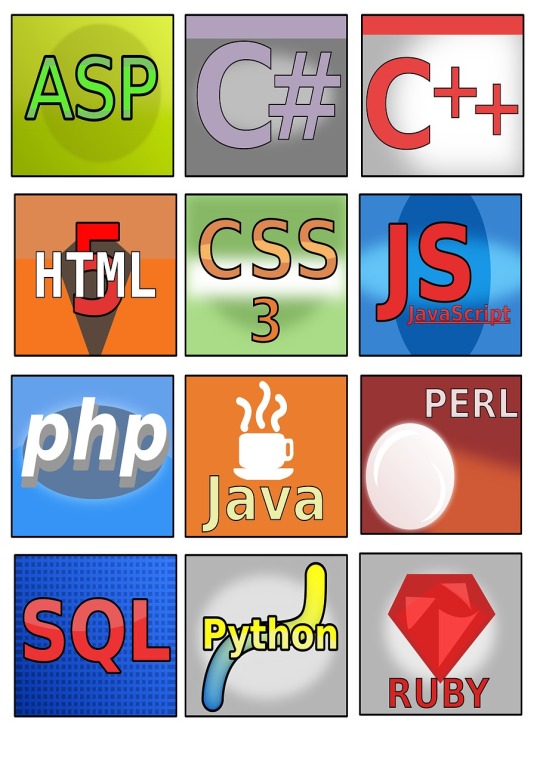
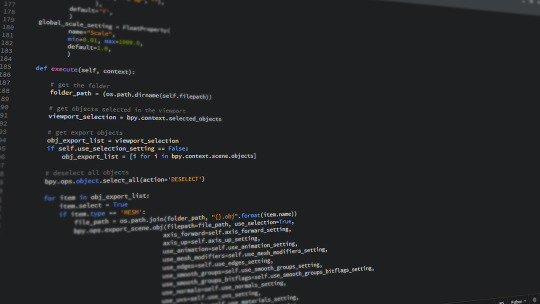
After the installation is complete, you can verify that Python is installed correctly by opening a command prompt and typing:
python --version
You should see the Python version that you installed, like this:
![Python version output]
Congratulations, you have successfully installed Python on your Windows 10 computer! 🎉
Don't forget to follow me @treasuremani
#pythonlearning#python language#software development#software#coding#programming#android app development#html#python#sql#php#css
2 notes
·
View notes
Text
2 notes
·
View notes
Text
Top Programming Languages to Learn for Freelancing in India

The gig economy in India is blazing a trail and so is the demand for skilled programmers and developers. Among the biggest plus points for freelancing work is huge flexibility, independence, and money-making potential, which makes many techies go for it as a career option. However, with the endless list of languages available to choose from, which ones should you master to thrive as a freelance developer in India?
Deciding on the language is of paramount importance because at the end of the day, it needs to get you clients, lucrative projects that pay well, and the foundation for your complete freelance career. Here is a list of some of the top programming languages to learn for freelancing in India along with their market demand, types of projects, and earning potential.
Why Freelance Programming is a Smart Career Choice
Let's lay out really fast the benefits of freelance programmer in India before the languages:
Flexibility: Work from any place, on the hours you choose, and with the workload of your preference.
Diverse Projects: Different industries and technologies put your skills to test.
Increased Earning Potential: When most people make the shift toward freelancing, they rapidly find that the rates offered often surpass customary salaries-with growing experience.
Skill Growth: New learning keeps on taking place in terms of new technology and problem-solving.
Autonomy: Your own person and the evolution of your brand.
Top Programming Languages for Freelancing in India:
Python:
Why it's great for freelancing: Python's versatility is its superpower. It's used for web development (Django, Flask), data science, machine learning, AI, scripting, automation, and even basic game development. This wide range of applications means a vast pool of freelance projects. Clients often seek Python developers for data analysis, building custom scripts, or developing backend APIs.
Freelance Project Examples: Data cleaning scripts, AI model integration, web scraping, custom automation tools, backend for web/mobile apps.
JavaScript (with Frameworks like React, Angular, Node.js):
Why it's great for freelancing: JavaScript is indispensable for web development. As the language of the internet, it allows you to build interactive front-end interfaces (React, Angular, Vue.js) and powerful back-end servers (Node.js). Full-stack JavaScript developers are in exceptionally high demand.
Freelance Project Examples: Interactive websites, single-page applications (SPAs), e-commerce platforms, custom web tools, APIs.
PHP (with Frameworks like Laravel, WordPress):
Why it's great for freelancing: While newer languages emerge, PHP continues to power a significant portion of the web, including WordPress – which dominates the CMS market. Knowledge of PHP, especially with frameworks like Laravel or Symfony, opens up a massive market for website development, customization, and maintenance.
Freelance Project Examples: WordPress theme/plugin development, custom CMS solutions, e-commerce site development, existing website maintenance.
Java:
Why it's great for freelancing: Java is a powerhouse for enterprise-level applications, Android mobile app development, and large-scale backend systems. Many established businesses and startups require Java expertise for robust, scalable solutions.
Freelance Project Examples: Android app development, enterprise software development, backend API development, migration projects.
SQL (Structured Query Language):
Why it's great for freelancing: While not a full-fledged programming language for building applications, SQL is the language of databases, and almost every application relies on one. Freelancers proficient in SQL can offer services in database design, optimization, data extraction, and reporting. It often complements other languages.
Freelance Project Examples: Database design and optimization, custom report generation, data migration, data cleaning for analytics projects.
Swift/Kotlin (for Mobile Development):
Why it's great for freelancing: With the explosive growth of smartphone usage, mobile app development remains a goldmine for freelancers. Swift is for iOS (Apple) apps, and Kotlin is primarily for Android. Specializing in one or both can carve out a lucrative niche.
Freelance Project Examples: Custom mobile applications for businesses, utility apps, game development, app maintenance and updates.
How to Choose Your First Freelance Language:
Consider Your Interests: What kind of projects excite you? Web, mobile, data, or something else?
Research Market Demand: Look at popular freelance platforms (Upwork, Fiverr, Freelancer.in) for the types of projects most requested in India.
Start with a Beginner-Friendly Language: Python or JavaScript is an excellent start due to their immense resources and helpful communities.
Focus on a Niche: Instead of trying to learn everything, go extremely deep on one or two languages within a domain (e.g., Python for data science, JavaScript for MERN stack development).
To be a successful freelance programmer in India, technical skills have to be combined with powerful communication, project management, and self-discipline. By mastering either one or all of these top programming languages, you will be set to seize exciting opportunities and project yourself as an independent professional in the ever-evolving digital domain.
Contact us
Location: Bopal & Iskcon-Ambli in Ahmedabad, Gujarat
Call now on +91 9825618292
Visit Our Website: http://tccicomputercoaching.com/
#Freelance Programming#Freelance India#Programming Languages#Coding for Freelancers#Learn to Code#Python#JavaScript#Java#PHP#SQL#Mobile Development#Freelance Developer#TCCI Computer Coaching
0 notes
Text
Web Development Roadmap for Students to Get Hired Fast

Introduction
In today’s digital era, web development is a career with vast opportunities and rapid growth. If you're a student eager to build a strong foundation and get hired quickly in this competitive industry, having a clear roadmap is crucial. This guide will walk you through essential steps and skills to master, helping you transition from a beginner to a confident web developer ready for the job market.
Step 1: Learn the Basics of Web Designing and Development
Before diving into coding, it's important to understand the fundamentals of web designing and development. Enroll in a web designing course or web designing coaching institute to gain hands-on experience with HTML, CSS, and JavaScript. These core technologies are the building blocks of any website and are crucial to becoming a skilled web developer.
Many students prefer web designing classes or web designing training institute to get structured learning with expert guidance. This foundational knowledge will help you understand how websites are built and styled.
Step 2: Master Frontend and Backend Development
Once comfortable with the basics, focus on frontend development, where you create the visible parts of a website users interact with. Skills like responsive design and working with frameworks such as React or Angular are highly valued.
Simultaneously, learning backend development — which deals with servers, databases, and application logic — is important. Consider joining a web development course or web development training institute to explore server-side languages like Node.js, PHP, or Python.
For a more comprehensive skill set, look into a full stack web development course in Yamuna Vihar or full stack web development training. Full stack developers, who handle both frontend and backend tasks, are in high demand.
Step 3: Explore UI/UX Design Fundamentals
Understanding user interface (UI) and user experience (UX) design can set you apart from other developers. This knowledge helps you build websites that are not only functional but also user-friendly and visually appealing.
Enroll in ui/ux courses with certificate in Yamuna Vihar or user interface design course to get started. These courses cover UX design fundamentals and offer certifications that add value to your portfolio.
You can also find ui ux design certification and ui ux designing coaching centre in Yamuna Vihar to deepen your skills in this area.
Step 4: Gain Practical Experience and Build a Portfolio
Theory is important, but practical experience is key to getting hired fast. Work on real projects, either through internships or freelance gigs, to apply your knowledge.
Look for web development coaching centre or web development classes that emphasize project work and portfolio development. A strong portfolio showcasing websites or applications you’ve built will impress potential employers.
Step 5: Learn Programming Languages like Python and Java
For backend and full stack roles, programming languages like Python and Java are essential. Join a python programming course or java full stack developer course to build proficiency.
These courses often offer python certification course or full stack developer certification , which help validate your skills to recruiters.
Step 6: Prepare for Interviews and Stay Updated
Landing your first job requires interview preparation. Practice coding problems, understand common interview questions, and be ready to explain your projects.
Stay updated with the latest technologies by attending workshops or joining web designing coaching centre in Uttam Nagarand full stack web development coaching institute.
Final Thoughts
Starting your journey with the right training at reputed institutes, such as web designing coaching in Yamuna Vihar or full stack developer training , is vital. Combining technical skills with UI/UX knowledge and real-world experience dramatically increases your chances to get hired quickly.
Remember, consistency and continuous learning are key in the fast-evolving web development industry. Follow this roadmap, practice regularly, and soon you’ll be ready to take on exciting opportunities in web development.
If you're looking for quality web development training or web designing course in Uttam Nagar, focus on institutes that offer practical projects, updated curriculum, and placement assistance to boost your career growth effectively.
Suggested Links: –
Oracle Database Administration
MY SQL Training
PHP Development
#PHP development course#MY SQL training course#oracle database training#advanced excel training#advance excel#C++ programming language#Python course#HTML course & training#web developement course in yamuna vihar#web development classes in uttam nagar
0 notes